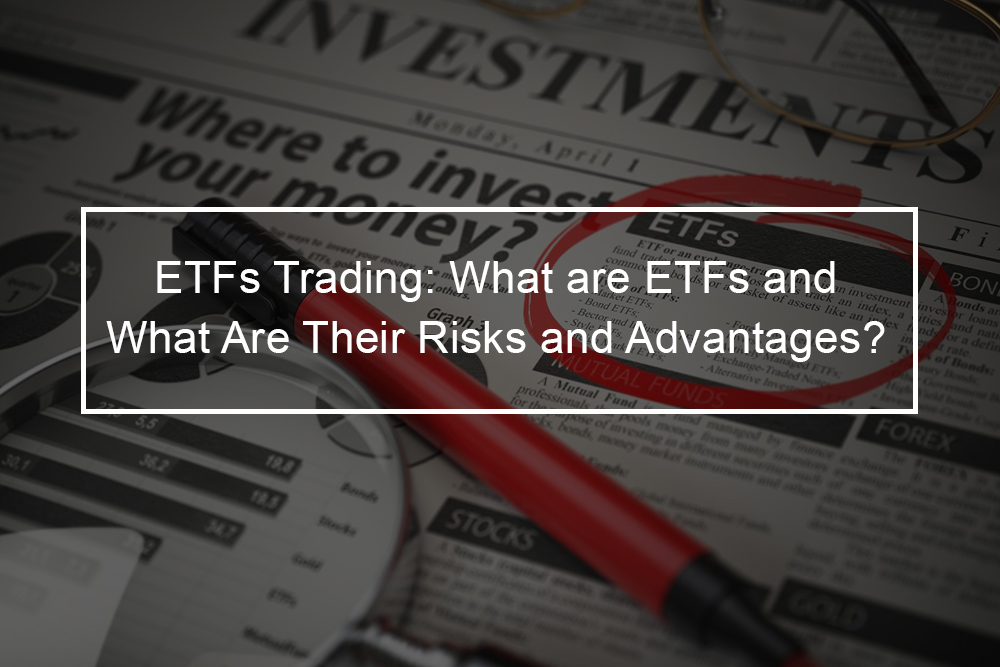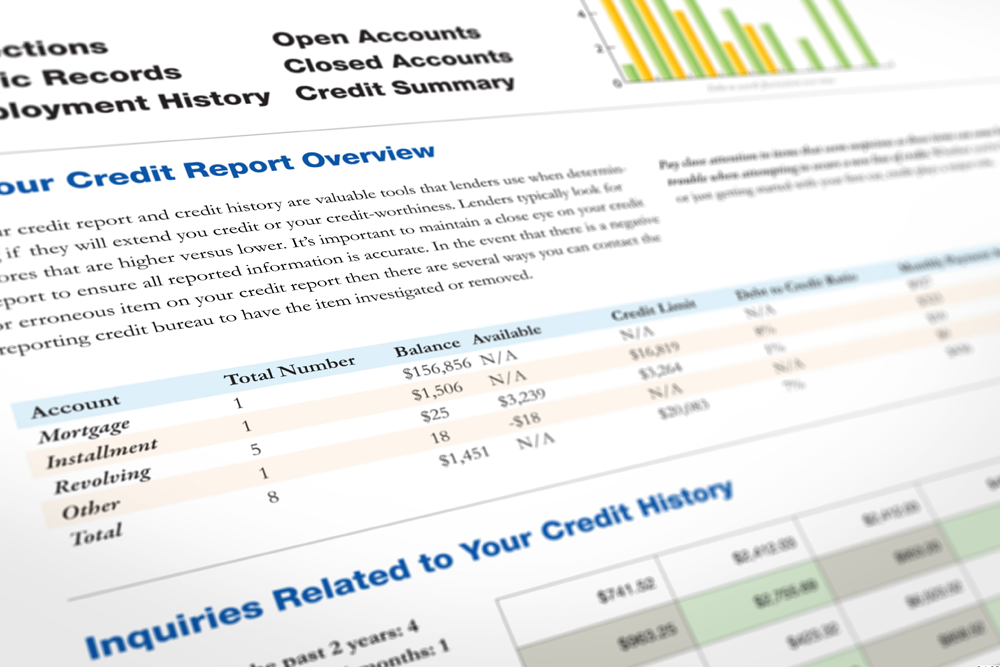
What is an ETF?
An exchange-traded fund is a type of security that engages a collection of securities like stocks that provide tracks for an underlying index, even though they can invest in any number of industry sectors or use various strategies. ETFs are in most ways similar to mutual funds; nonetheless, they are listed on exchanges and ETF shares trade all through the day just like an ordinary stock.
Some famous examples are the SPDR S&P 500 ETF (SPY), which traces the S7P 500 Index. EFTs can comprise many kinds of investments, bonds, commodities, and stocks or a mixture of investment types. An exchange-traded fund is a marketable security, indicating it has an associated price that can be easily bought and sold.
An EFT is an exchange-traded fund because it is traded on an exchange, just like stocks. The price of an ETF’s share will change all through the trading day as the shares are bought and sold on the market. This is contrary to mutual funds, which are not traded on an exchange, and trade only once per day after the market closes. Besides, ETFs tend to be more cost-effective and more liquid when compared to mutual funds.
An EFT is a kind of fund that holds multiple underlying assets, not just one like a stock. Since there are numerous assets within an ETF, they can be an outstanding choice for diversification.
An ETF can own numerous stocks across industries, or it can be isolated to one specific industry or sector. Some funds center on only United States offerings, while others have an international outlook. For instance, banking-focused ETFs can contain stocks of various banks across the industry.
How do ETFs work?
First, an ETF provider considers the universe of assets, consisting of bonds, stocks, currencies, or commodities, and creates a basket with a unique ticker.
Then 8investors can buy a share of that basket, just like purchasing shares of a company. The sellers and buyers trade the ETF all through the day on an exchange, much like a stock.
ETFs vs. stocks vs. mutual funds
Generally, ETFs have lesser fees than mutual funds, which is a part of their pros. While the average United States equity mutual fund charges 1.42 percent in annual administrative expenses- what is known as an expense ratio- the charges on the average equity ETF are 0.53 percent, following data from ETF.com, a subsidiary of the Chicago Board Options Exchange that is dedicated to these investments.
Moreover, ETFs provide tax-efficiency benefits to investors. There is typically more turnover within a mutual fund (particularly those that are actively managed) comparative to an ETF, and such purchasing and selling can lead to capital gains.
Likewise, when investors go to sell a mutual fund, the manager will be required to raise cash by selling securities, which also can accumulate capital gains. In either case, investors will be on the hook for those taxes.
ETFs are increasingly famous; however, the number of accessible mutual funds still is higher. The two items also have different management structures (generally passive for ETFs, active for mutual funds, though actively managed ETFs do exist). Similar to stocks, ETFs can be traded on exchanges and have unique ticker symbols that allow you to trace their price activity. However, ETFs represent a basket of assets, while a stock represents just one corporate.
Types of ETFs
ETFs might trade like stock; however, under the hood, they are more like mutual funds and index funds, which can vary in terms of their underlying assets and investment objectives. Here are some common types of ETFs. Note that these categories are not mutually exclusive. For instance, a stock ETF may also be index-based and vice versa. The ETFs are not categorized by management type (active and passive), but rather by the kinds of investments held within the ETF.
- Stock ETFs: These ETFs comprise stocks and are often meant for long-term growth. Whereas typically, it is less risky than individual stocks, they carry slightly more threat than some of the others listed in this post, such as bond ETFs.
- Bond ETFs: Contrarily to individual bonds, bond ETFs do not have a maturity date, so the most common use for them is to accrue regular cash payments to the investor. These payments come from the interest accumulated by the individual bonds within the fund. Bond ETFs can be great, lower-risk complements to stock ETFs.
- Commodity ETFs: In simple terms, commodities are raw goods that can be sold or bought, like crude oil, gold, and coffee. Commodity ETF allows you to bundle these securities into one investment. With commodity ETFs, it is particularly essential to know what is inside them- do you own equity in companies that transport, produce and store these goods or do you have ownership in the fund’s physical stockpile of the commodity? Does the ETF have futures contracts? And is the commodity regarded as collectible in the eyes of the IRS? These elements can come with severe tax implications and varying risk levels.
- Sector ETFs: The United States stock market is divided into eleven sectors, and each one is made up of organizations that operate within that sector. Sector ETFs offer a way to invest in particular companies within those sectors, like industrial, financial, or health care sectors. These can be particularly beneficial to investors tracking business cycles, as some sectors tend to do better during expansion periods, others perform better during contraction time. Usually, these kinds come with a higher risk than broad-market ETFs.
- International ETFs: Foreign stocks are extensively recommended for creating a diverse portfolio, together with United States bonds and stocks. International ETFs are a simple- and generally less risky- way to identify these foreign investments. These ETFs might be corporate investments in specific country blocs or individual countries.
Advantages and disadvantages of ETFs
Following the Investment Company Insitute, United States investors had $3.4 trillion invested in ETFs in 2018, more than double the money invested in ETFs in 2013. Investors have flooded to ETFs since they are simple, comparatively cheap, and access to a diversified product.
Advantages of ETF investment
- Diversification: Whereas it is simple to think of diversification in the sense of the broad market verticals- bonds, stocks, or a specific commodity, for instance- ETFs also allow investors to diversify across horizontals, similar to industries. It would take so much money and effort to purchase all the components of a specific basket; however, with the click of a button, an ETF delivers those benefits to your portfolio.
- Ta benefits: Typically, investors are taxed only upon selling the investment, while mutual funds incur such burdens throughout the investment.
- Transparency: Anybody with internet access can search the price activity for a specific ETF on an exchange. Besides, a fund’s holdings are disclosed daily to the public, while that occurs quarterly or monthly to mutual funds.
Disadvantages of ETFs investment
- Trading charges: ETF costs might not end with the expense ratio. Since ETFs are exchange-traded, they may be subject to commission charges from online brokers. Most brokers have decided to drop their ETF commissions to zero; however, not all have.
- Risk the ETF will close: The main reason this occurs is that a fund has not brought in enough assets to pay administrative costs. The most considerable inconvenience of a shuttered ETF is that investors must sell sooner than they may have intended, probably at a loss. Moreover, there is the annoyance of having to reinvest that money and the possibility of an unexpected tax burden.
- Any buyers for the ETFs? As with any security, you will be at the whim of the present market prices when it comes time to sell; however, ETFs that are not traded as often can be challenging to unload.
How to shop for ETFs?
It is essential to know that while charges are generally lower for ETFs, they also can vary significantly from fund to fund, based on the issuer- the greatest being Vanguard, SPDR, and IShares as on-demand and complexity. Even ETFs tracing the same index have different charges.
One trend that has been excellent for ETF shoppers – in October 2019, most major brokerages dropped their commissions on stock, option trades, and ETF to $0.
Most ETFs are passively controlled investments; they easily track an index. Some investors opt for the hands-on approach of mutual funds, which are run by a professional manager who attempts to outperform the market. There are actively managed ETF that resemble mutual funds; however, they come with higher charges. So consider your investing style before purchasing.
The explosion of this market also has experienced some funds come to market that might not stack up on merit: borderline gimmicky money that takes a thin slice of the investing globe and might not offer much diversification. Remember that an ETFs is inexpensive does not necessarily mean it is ideal for your broader investment thesis.











